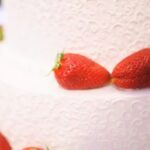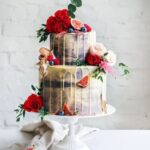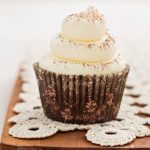Cake decorations play a crucial role in transforming an ordinary dessert into a stunning masterpiece. Whether it’s a simple birthday cake or an elaborate wedding cake, sugar cake decorations can truly elevate the presentation and make any occasion extra special. In this article, we will delve into the art of creating sugar cake decorations, exploring various techniques, tools, and tips to help you unleash your creativity in the world of cake decorating.
If you’ve ever wondered how to create sugar cake decorations that are not only visually appealing but also delightful to taste, you’ve come to the right place. From fondant to food coloring to shaping tools, we will provide you with a detailed list of all the materials needed to get started on your sugary creations.
With these essential supplies in hand, you’ll be well-equipped to embark on a journey of crafting exquisite cake decorations that will leave everyone impressed.
Whether you’re a beginner looking to learn basic techniques or an experienced decorator seeking new challenges, this article has something for everyone. We will walk you through step-by-step instructions on working with fondant to create various shapes and designs for your cake decorations.
Additionally, we will explore advanced techniques like molding, painting, and embossing to help you take your sugar creations to the next level. Get ready to unlock your imagination and bring your cakes to life with stunning sugar decorations.
Materials Needed
When it comes to creating stunning sugar cake decorations, having the right materials is essential. Here is a detailed list of all the tools and ingredients you will need to bring your cake decorating visions to life:
Materials:
- Fondant: This pliable icing is perfect for creating intricate shapes and designs for your cakes. You can either buy pre-made fondant or make your own using marshmallows and confectioners’ sugar.
- Food Coloring: Gel food coloring works best for tinting fondant as it provides vibrant colors without altering the consistency. Make sure to have a variety of colors on hand to create your desired palette.
- Rolling Pin: A smooth rolling pin will help you roll out the fondant to the desired thickness for cutting and shaping.
- Cutting Tools: Sharp knives, pizza cutters, and cookie cutters are necessary for cutting out shapes and designs from the fondant.
- Shaping Tools: These tools include molds, sculpting tools, embossers, and stencils, which can help you create intricate details on your sugar cake decorations.
Now that you have gathered all the necessary materials, let’s delve into how to create sugar cake decorations with these ingredients and tools. Fondant serves as a versatile medium that allows you to explore various techniques in crafting beautiful adornments for your cakes.
To start creating sugar cake decorations, roll out the fondant to an even thickness on a cornstarch-dusted surface using a rolling pin. Then use your cutting tools to cut out different shapes like flowers, leaves, or geometric patterns. You can also use shaping tools to add texture or detail to your creations. The possibilities are endless when it comes to designing unique cake decorations with fondant.
By mastering these basic techniques and experimenting with different shapes and designs, you will be on your way to creating professional-looking sugar cake decorations that will impress any guest at your next celebration or event. Whether you are making a simple birthday cake or an elaborate wedding dessert, learning how to work with fondant opens up a world of creative possibilities in the realm of cake decorating.
Basic Techniques
Creating sugar cake decorations can be a fun and rewarding experience for both beginner and experienced bakers. To start, you will need a few essential tools and ingredients, including fondant, food coloring, shaping tools like cutters and molds, a rolling pin, and a non-stick mat. Fondant is a versatile material that can be molded into various shapes and designs to suit any cake decorating theme.
To begin working with fondant, you’ll first need to knead it until it becomes smooth and pliable. This will help remove any air bubbles and make the fondant easier to work with. Once kneaded, roll out the fondant on a clean surface dusted with powdered sugar or cornstarch to prevent sticking. Use your shaping tools to cut out different shapes or create intricate designs by hand.
One popular technique for creating sugar cake decorations is using silicone molds. Simply press the fondant into the mold, then gently remove it to reveal a perfectly shaped decoration. For more detailed designs, consider using food coloring or edible markers to add color and shading to your creations. Experiment with different techniques and have fun exploring the possibilities of sugar cake decorations.
| Materials Needed | Tools Needed |
|---|---|
| Fondant | Rolling Pin |
| Food Coloring | Cutters & Molds |
| Powdered Sugar/Cornstarch | Non-stick Mat |
Advanced Techniques
Molding
Molding is a technique that involves shaping fondant into intricate designs using molds or shaping tools. Whether you’re creating flowers, leaves, or figurines, molding allows for precise and detailed decorations to adorn your cakes. To create molded sugar decorations, start by kneading your fondant until it’s pliable.
Then press the fondant into the mold, making sure to remove any excess before carefully releasing the shape from the mold. Allow the molded decoration to set and dry before placing it on your cake.
Painting
Painting on fondant is another advanced technique that can add depth and dimension to your sugar decorations. Edible food coloring mixed with alcohol or clear vanilla extract can be used to paint intricate details on fondant pieces. Whether you’re adding shading to flowers or writing a message on a cake topper, painting allows for endless creativity when decorating cakes.
Embossing
Embossing involves creating raised patterns or designs on fondant using textured tools or molds. This technique adds a beautiful tactile quality to your sugar decorations and can mimic intricate lace patterns or geometric designs. To emboss fondant, roll out your fondant evenly before pressing the embossing tool firmly onto the surface. Carefully lift the tool to reveal the raised design underneath. Experiment with different textures and patterns to create unique and sophisticated sugar decorations for your cakes.
By mastering these advanced techniques for creating sugar cake decorations, you can take your cake decorating skills to new heights. Whether you’re molding delicate flowers, painting intricate details, or embossing elegant patterns, the possibilities are endless for adding artistic flair to your sweet creations. With practice and patience, you’ll soon be able to create show-stopping cakes that will impress friends and family at any celebration.
Color Mixing
One helpful tip for achieving consistent and precise colors is to use gel food coloring instead of liquid food coloring. Gel food coloring is more concentrated, allowing you to use less product to achieve vibrant shades without altering the consistency of your fondant. Additionally, it’s easier to control the intensity of the color when using gel-based coloring.
When mixing colors for your sugar cake decorations, remember that you can always start with a small amount of color and gradually add more until you reach your desired shade. This approach helps prevent over-coloring your fondant and having to start over from scratch. Keep in mind that some colors may deepen or develop over time, so allow your colored fondant to rest for a while before making adjustments if necessary.
| Benefit | Tip |
|---|---|
| Concentration | Use gel food coloring for more vibrant shades |
| Gradual Mixing | Add color gradually to achieve the perfect shade |
Experiment with different color combinations and ratios to create unique and custom shades for your sugar cake decorations. Remember that practice makes perfect, so don’t be afraid to play around with different colors until you find what works best for your specific design. With these tips and tricks in mind, you’ll be well on your way to mastering color mixing for your next cake decorating project.
Theme Inspiration
Creating sugar cake decorations can take your dessert to the next level, adding a personal touch and theme to any occasion. Whether you are celebrating a birthday, wedding, or holiday, there are endless possibilities when it comes to decorating with sugar. Here are some ideas for different themes and occasions where sugar cake decorations can be used:
- Birthdays: For a birthday celebration, consider using bright and colorful fondant to create fun shapes like balloons, presents, or even the age of the birthday celebrant. Personalize the cake with their favorite colors, characters, or interests to make it extra special.
- Weddings: When it comes to weddings, elegant and sophisticated sugar decorations can enhance the beauty of the cake. Think about incorporating delicate flowers, intricate lace details, or even monogrammed initials for a romantic touch. You can also match the color scheme of the wedding for a cohesive look.
- Holidays: From Christmas to Halloween to Valentine’s Day, holidays provide endless opportunities for creative sugar cake decorations. Use seasonal colors and symbols to decorate your cakes such as snowflakes and reindeer for winter holidays or pumpkins and ghosts for Halloween.
With some creativity and imagination, you can tailor your sugar cake decorations to suit any theme or occasion you desire. It’s all about bringing your vision to life on top of a delicious cake that will surely impress your guests. Remember that practice makes perfect when it comes to mastering the art of creating sugar cake decorations.
Troubleshooting
Cracking Fondant
One common issue that may arise when working with fondant for sugar cake decorations is cracking. This can be frustrating, especially when you have spent time shaping and molding the fondant. To prevent cracking, make sure your fondant is not too dry by kneading it well before working with it. If you notice cracks forming while shaping the fondant, try adding a small amount of shortening or edible glue to help smooth out the surface.
Color Bleeding
Another potential problem when creating sugar cake decorations is color bleeding. This occurs when different colored pieces of fondant come into contact with each other and transfer their colors. To avoid color bleeding, ensure that your hands are clean and dry before handling different colored fondants. Additionally, you can use a small amount of cornstarch to lightly dust the surface of the fondant to prevent colors from blending together.
Air Bubbles
Air bubbles trapped beneath the surface of the fondant can also be a common issue when creating sugar cake decorations. These bubbles can cause unsightly bumps or distortions in your designs. To avoid air bubbles, make sure to roll out your fondant evenly and smoothly, using a rolling pin with even pressure. You can also gently press out any air bubbles with a decorating tool or toothpick before finalizing your decoration on the cake.
By addressing these common problems and following proper techniques, you can create stunning sugar cake decorations that will impress your guests and elevate any dessert to a work of art. Remember to practice patience and precision when working with fondant, as mastering these skills will result in beautifully decorated cakes for any occasion.
Storage and Preservation
Creating sugar cake decorations can be a rewarding and enjoyable process, but it’s essential to ensure that your hard work is preserved properly so that they stay fresh and look their best when it’s time to decorate a cake. Proper storage and preservation techniques can make all the difference in maintaining the quality of your sugar creations.
To store your sugar cake decorations, it is important to keep them in a cool, dry place away from direct sunlight. Fondant decorations can be sensitive to heat and moisture, which can cause them to lose their shape or color.
Placing them in an airtight container or zipped plastic bag can help protect them from humidity and prevent them from drying out too quickly. Additionally, storing them in a cardboard box with layers of parchment paper between each decoration can help prevent breakage.
When it comes to preserving your sugar cake decorations, making sure they are properly sealed is key. Applying a thin layer of clear piping gel or edible confectioner’s glaze can help create a protective barrier that keeps your decorations looking fresh and vibrant for longer periods. Another option is to carefully wrap each decoration in plastic wrap before storing them, ensuring that no air or moisture can penetrate and affect their appearance.
In conclusion, mastering the art of creating sugar cake decorations is not just about the creative process itself but also about proper storage and preservation techniques. By following these guidelines on how to store and preserve your sugar creations effectively, you can ensure that they remain visually appealing and ready to adorn any cake with beauty and elegance whenever you need them.
Frequently Asked Questions
How to Make Candy Cake Decorations?
Making candy cake decorations can be a fun and creative process. One way to do this is by melting different colored candy melts, pouring them into molds, letting them set, and then adding them to your cake. You can also use fondant or gum paste to sculpt various shapes and figures to adorn your cake.
How Do You Melt Sugar for Cake Decorations?
Melting sugar for cake decorations requires careful attention and technique. To melt sugar, you can start by heating it in a clean, dry saucepan over medium heat until it begins to melt and turn into a golden caramel color.
Be sure not to stir the sugar while it’s melting as this can cause crystallization. Once the sugar is completely melted, you can pour it onto a silicone mat or parchment paper to cool before using it for decorations.
Can You Make Edible Cake Decorations?
Yes, edible cake decorations can be made using various ingredients such as fondant, gum paste, modeling chocolate, or even edible image printing sheets. These materials are safe to consume and allow for intricate designs on cakes for special occasions like birthdays or weddings.
With the right tools and techniques, you can create beautiful edible decorations to enhance your cakes and impress your guests.

Welcome to my blog about home and family. This blog is a place where I will share my thoughts, ideas, and experiences related to these important topics. I am a stay-at-home mom with two young children. I hope you enjoy reading it! and may find some helpful tips and ideas that will make your home and family life even better!





